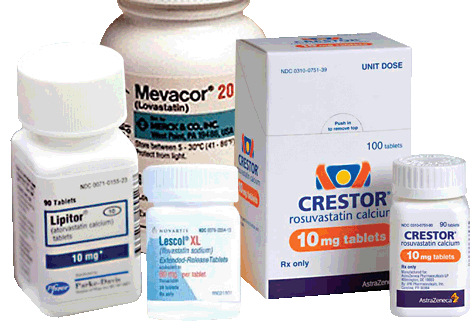People with heart disease who take cholesterol-lowering statins may have a lower risk of depression than those who don't take the drugs, according to a new study from California.
It's still not clear whether the popular medications have anything to do with the brighter mood among users. But the results do support the hypothesis that clogged-up blood vessels in the brain could play a role in depression, said Dr. Christian Otte.
"It is possible that statins exert beneficial effects on depressive symptoms through protective effects on cerebrovascular processes," Otte, of the Charité University Medical Center in Berlin, told Reuters Health by email.
Statins are some of the most widely used drugs worldwide. Between 2005 and 2008, a quarter of U.S. adults over 45 took the drugs, according to the National Center for Health Statistics.
While the drugs are generally considered safe, the U.S. Food and Drug Administration on Tuesday released a warning linking them to a slightly increased risk of diabetes and memory loss.
There have also been rare cases of liver and muscle damage related to statins.
To find out if the medications could have an effect on depression, Otte's group, which published its finding in the Journal of Clinical Psychiatry, tracked 965 people in California for several years. All of the participants had suffered a heart attack or had other signs of heart disease.
At the beginning of the study, 65 percent of the people were taking a statin, such as Lipitor, Crestor or Zocor.
Based on questionnaires about their mental health, 17 percent of statin users screened positive for depression at the beginning of the study compared to 24 percent of people not on the drugs.
Among those who had no mood problems initially, 18 percent of statin users and 28 percent of nonusers became depressed at some point over the six year study.
It's still not clear whether the popular medications have anything to do with the brighter mood among users. But the results do support the hypothesis that clogged-up blood vessels in the brain could play a role in depression, said Dr. Christian Otte.
"It is possible that statins exert beneficial effects on depressive symptoms through protective effects on cerebrovascular processes," Otte, of the Charité University Medical Center in Berlin, told Reuters Health by email.
Statins are some of the most widely used drugs worldwide. Between 2005 and 2008, a quarter of U.S. adults over 45 took the drugs, according to the National Center for Health Statistics.
While the drugs are generally considered safe, the U.S. Food and Drug Administration on Tuesday released a warning linking them to a slightly increased risk of diabetes and memory loss.
There have also been rare cases of liver and muscle damage related to statins.
To find out if the medications could have an effect on depression, Otte's group, which published its finding in the Journal of Clinical Psychiatry, tracked 965 people in California for several years. All of the participants had suffered a heart attack or had other signs of heart disease.
At the beginning of the study, 65 percent of the people were taking a statin, such as Lipitor, Crestor or Zocor.
Based on questionnaires about their mental health, 17 percent of statin users screened positive for depression at the beginning of the study compared to 24 percent of people not on the drugs.
Among those who had no mood problems initially, 18 percent of statin users and 28 percent of nonusers became depressed at some point over the six year study.














 Harvard scientists are challenging traditional medical logic that dictates that women are born with a finite amount of eggs. The scientists said they have discovered the ovaries of young women harbor rare stem cells that are in fact capable of producing new eggs.
Harvard scientists are challenging traditional medical logic that dictates that women are born with a finite amount of eggs. The scientists said they have discovered the ovaries of young women harbor rare stem cells that are in fact capable of producing new eggs.









